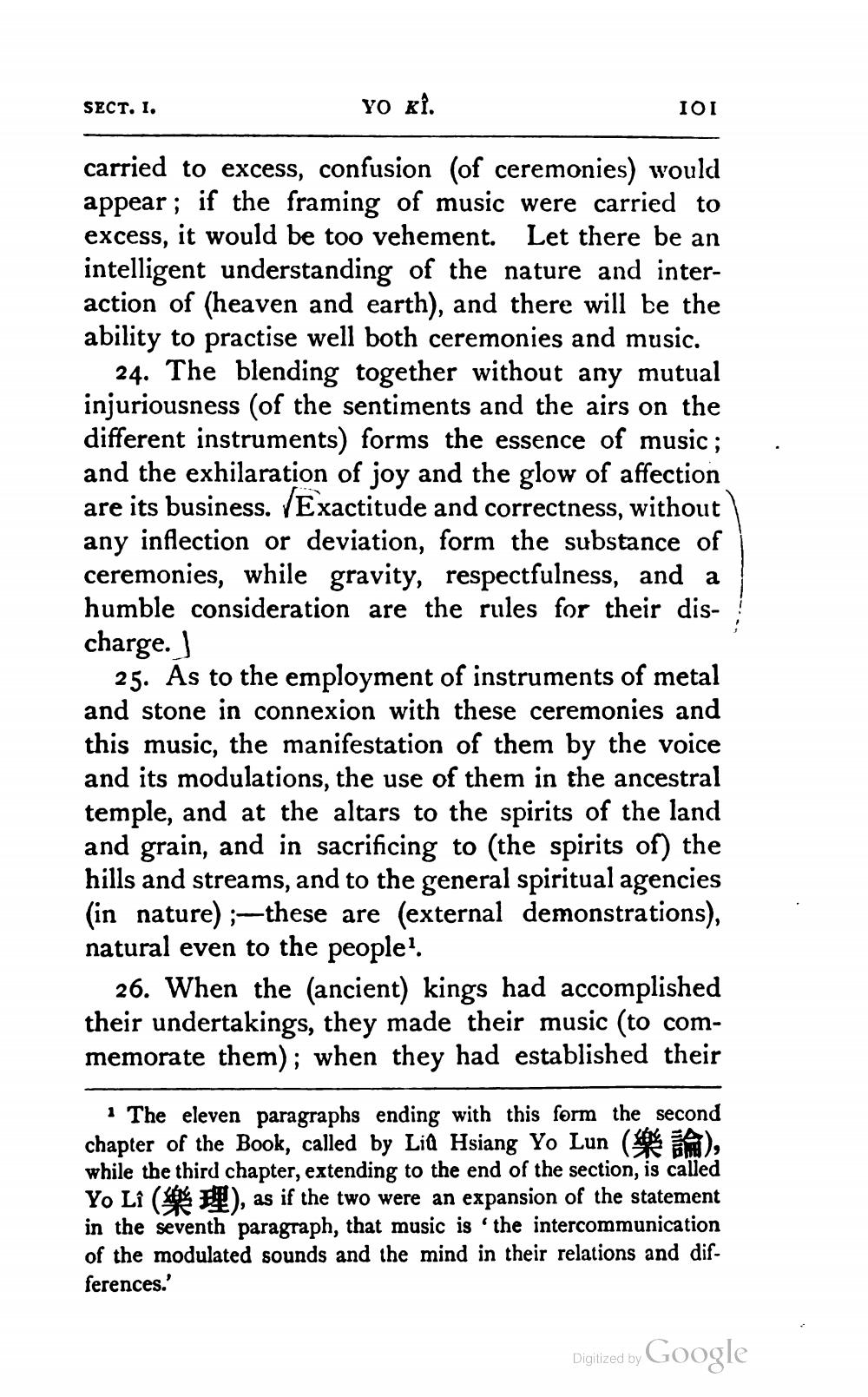________________
SECT. 1.
YO KT.
ΙΟΙ
carried to excess, confusion (of ceremonies) would appear; if the framing of music were carried to excess, it would be too vehement. Let there be an intelligent understanding of the nature and interaction of (heaven and earth), and there will be the ability to practise well both ceremonies and music.
24. The blending together without any mutual injuriousness (of the sentiments and the airs on the different instruments) forms the essence of music; and the exhilaration of joy and the glow of affection are its business. /Exactitude and correctness, without any inflection or deviation, form the substance of ceremonies, while gravity, respectfulness, and a humble consideration are the rules for their discharge.
25. As to the employment of instruments of metal and stone in connexion with these ceremonies and this music, the manifestation of them by the voice and its modulations, the use of them in the ancestral temple, and at the altars to the spirits of the land and grain, and in sacrificing to (the spirits of) the hills and streams, and to the general spiritual agencies (in nature) ;-—these are (external demonstrations), natural even to the people?
26. When the (ancient) kings had accomplished their undertakings, they made their music (to commemorate them); when they had established their
1 The eleven paragraphs ending with this form the second chapter of the Book, called by Lill Hsiang Yo Lun ( A), while the third chapter, extending to the end of the section, is called Yo Lî ( B), as if the two were an expansion of the statement in the seventh paragraph, that music is the intercommunication of the modulated sounds and the mind in their relations and differences.'
Digitized by Google




